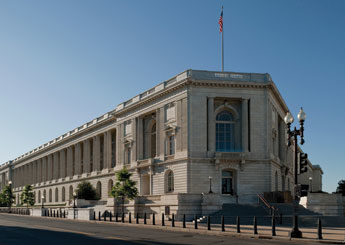Annual report outlines progress on safety inspections of congressional worksites

Photo: Architect of the Capitol
Washington – The Office of Compliance’s Office of General Counsel expects to conduct more safety inspections of legislative-branch workplaces during the 114th Congress than it did during the previous Congress, according to OOC’s annual report for fiscal year 2015.
The Congressional Accountability Act of 1995 requires OOC to review and report at least once per Congress on whether legislative-branch buildings comply with the Occupational Safety and Health Act. Inspections cover all member offices in the House and Senate, as well as public assembly spaces in legislative-branch facilities. The final inspection report for the 114th Congress – which will end Jan. 3 – is scheduled to be released in 2017.
OGC said it finished about half of its planned inspections for the 114th Congress during FY 2015 and intends to check 10 more facilities than the 68 inspected during the previous Congress. The office is focusing on high-hazard worksites and duties, in particular the Architect of the Capitol’s Construction Division and facilities with repeat higher-risk hazard findings. OGC states it will “continue to build upon the higher hazard focus implemented during the past two Congresses, including fire safety concerns and areas of special interest.” Inspections also will include verifying reduction of the most serious hazards found during the last inspection and inspection of newly occupied or renovated facilities.
In addition, OOC has responded to more than 25 requests for occupational safety inspections in the past year. The Congressional Accountability Act allows congressional workers and offices to request an inspection to determine if a hazardous work condition, such as poor fall protection or loud noise, is present.
OOC also restarted its Safe Office Awards to honor Senate and House offices that are hazard-free.
According to the FY 2014 annual report released last year, inspections of congressional workplaces uncovered many hazards that should have been “readily apparent” to supervisors and workers.
Post a comment to this article
Safety+Health welcomes comments that promote respectful dialogue. Please stay on topic. Comments that contain personal attacks, profanity or abusive language – or those aggressively promoting products or services – will be removed. We reserve the right to determine which comments violate our comment policy. (Anonymous comments are welcome; merely skip the “name” field in the comment box. An email address is required but will not be included with your comment.)

